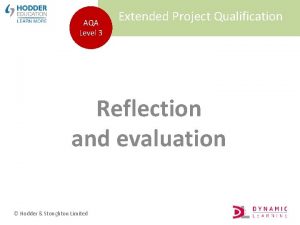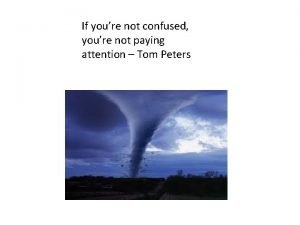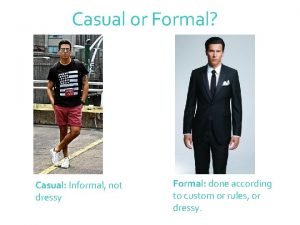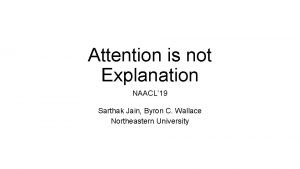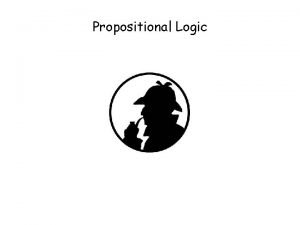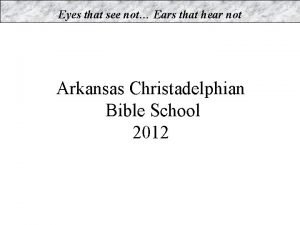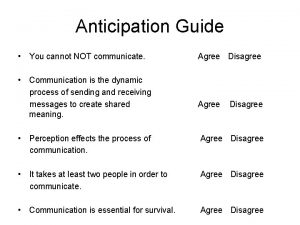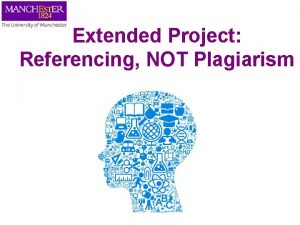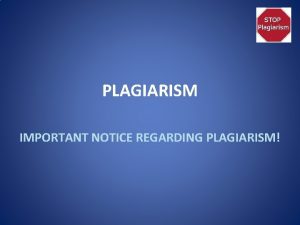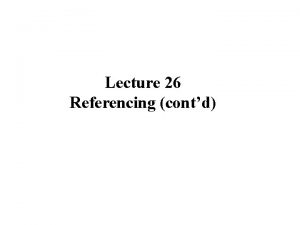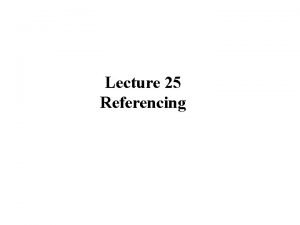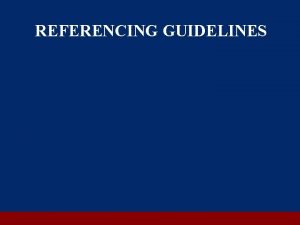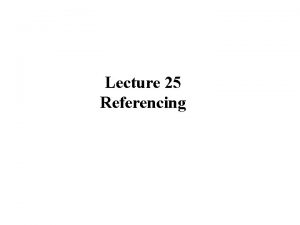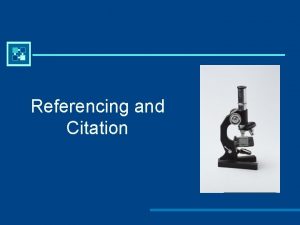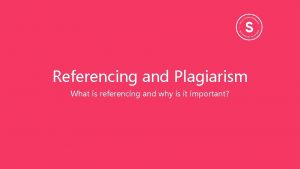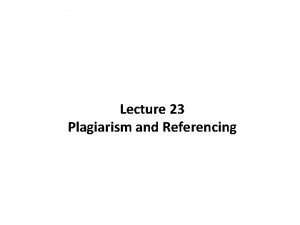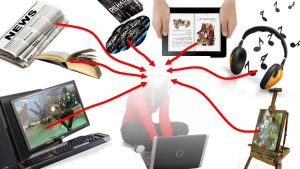Extended Project Referencing NOT Plagiarism WHAT is referencing












![The Harvard Style How to reference journal articles: Surname[s] of author[s], Initial[s]. (Year) Title The Harvard Style How to reference journal articles: Surname[s] of author[s], Initial[s]. (Year) Title](https://slidetodoc.com/presentation_image/5a9dee2bb58ffa4b1c50083cc9f5c5e5/image-13.jpg)



- Slides: 16

Extended Project: Referencing, NOT Plagiarism

WHAT is referencing? WHY do I need to reference? HOW do I read a reference? WHAT do I need to reference? • Referencing is a way of acknowledging the sources that you have referred to in your work • It allows the reader to see where you are basing the arguments and conclusions you’ve come to in your work. • It gives a sense of the broader academic context in which your work sits • Enables you as an author to do a number of things • Being able to read a reference can help you find more sources for your research. • You need to reference any work or ideas that are no your own.

To Inform To Demonstrate To Separate To Reinforce To Acknowledge Inform your readers of the sources you have used so they can follow up your references to find the original sources of information Demonstrate that you have read widely – evidence the depth and breadth of your reading. Reading around your subject allows you to interact with ideas and concept and Separate your ideas from the ideas of others demonstrates your depth of interest and understanding in your subject You will often be marked on your ability to assess, contrast, critically analyse and evaluate Reinforce your own arguments. Illustrate that different arguments. you are basing your own arguments on established evidence from high – quality Accurate referencing will help make it clear sources. which parts of your writing are based on the Acknowledge contribution from others. Provide work of others and which are your own analysis Lend credibility to your own ideas context for your writing in the work being done and evaluation by others. Avoid Plagiarism

When and What to Reference Write down as many things you can think of that require referencing • • • Statistics Quotations Facts Examples from other people’s work Diagrams Images and photographs Models Equations Theories/ideas/concepts

True or False • Information on the internet is 'free'. Anyone can use it without having to reference it. • As long as I use speech marks, I don't have to say where the quotation is from. • I can copy pictures/diagrams/photos without referencing them. • If I summarise other people's ideas, I still need to reference them. • If I paraphrase or rewrite the information, I don't need to reference it. • Some info is 'common knowledge', it doesn't need to be referenced. • Being caught plagiarising can result in the failure of a degree course. • Statistics need to be referenced. • If I cite someone once, I can use their ideas later without needing to cite them again. • Plagiarism is copying published work; I can copy my mate's work because it's not been published.

How to Reference Cite the original text This is when you are using someone else’s idea, image, diagram, without using their exact text Directly Quote from the original text When you write word-for-word something from someone else’s writing. These should be kept short. Paraphrase the idea or concept When you have a large article and want to summarise the ideas into a few sentences or provide an overview of the idea/concept All of these three methods require you to reference your source of information

Choose your method You have over two pages of an article that you want to use as evidence for your essay. It is possible to quote parts of it, but this might not give the full picture. How should you do this? Directly Quote from the original text Paraphrase the idea or concept Cite the original text None of These

Choose your method You have made a point in your essay and need to illustrate it with some evidence from a primary source. You have a sentence that is perfect. How can you include this in your essay Directly quote from the original text Paraphrase the idea or concept Cite the original text None of These

Choose your method You are talking about the context behind a certain concept. You are describing it briefly at the start of a paragraph but need to give some evidence, how do you do this? Directly Quote from the original text Paraphrase the idea or concept Cite the original text None of These

Choose your method Your teacher mentioned a widely agreed concept in a lecture, you have looked it up in a few books but they do not seem to reference back to any particular author. You are worried you will not be able to find a citation for this. What do you do? Directly Quote from the original text Paraphrase the idea or concept Cite the original text None of These

How to Reference • In the body text you need to clearly detail the name of the author and the year their work was published – citation • The reader should then be able to cross-reference this to a more detailed list at the end Reference List or ‘Bibliography’ • Both should be systematic, uniform and thorough, and really easy to understand • Throughout any written report, make sure you use the same system consistently

The Harvard Style There are lots of different styles of referencing, we recommend using the Harvard Style How to reference a book In the body of the text you need to put Author (Date) Darwin (1972) famously outlined his theory of evolution, based on his close observations of variations between species around the world Bibliography (at the end) Who, When, What, Where & By Whom Darwin, C. (1972) The Origin of Species. London: Dent. Pay attention to the punctuation and keep it consistent.
![The Harvard Style How to reference journal articles Surnames of authors Initials Year Title The Harvard Style How to reference journal articles: Surname[s] of author[s], Initial[s]. (Year) Title](https://slidetodoc.com/presentation_image/5a9dee2bb58ffa4b1c50083cc9f5c5e5/image-13.jpg)
The Harvard Style How to reference journal articles: Surname[s] of author[s], Initial[s]. (Year) Title of article, Journal Title, Volume (Part), Pages Wong, S. T. and Goodin, S. (2009) Overcoming drug resistance in patients with metastatic breast cancer. Pharmacotherapy, 29 (2), 954 -965. How to reference Websites: http: //www. bmj. com/ (Accessed 16/03/2009) It’s really important you include the date you accessed the website

Plagiarism • Plagiarism is the use of any source, published or unpublished, without proper acknowledgement or referencing. • It is easy to accidentally plagiarise. Carelessness when it come to referencing is a key cause, but so are poor note-taking skills and cutting and pasting from the internet without due care. • Many students who have not intended to cheat can still face the serious consequences of plagiarism. • Do not let poor academic practise let down your work

Activity • You have been given examples of a student’s work, and the original source. • Decide in your groups whether the work is • Plagiarism • Bad Practice • Acceptable

Final Hints • If in doubt: reference it. • Make sure you record the source when taking notes and make it clear if you are copying directly, paraphrasing or summarising. • Use different colours when you write down direct quotes • ALWAYS make notes in your own words. • Don't cut and paste! • Be prepared to go and find a reference for something you already know, for instance a scientific claim, in order to back it up
 English 9 vocabulary unit 1
English 9 vocabulary unit 1 Extended project qualification aqa
Extended project qualification aqa Extended project lifecycle
Extended project lifecycle Extended project lifecycle
Extended project lifecycle If you're not confused you're not paying attention
If you're not confused you're not paying attention Casual and informal
Casual and informal Attention is not not explanation
Attention is not not explanation Too broad too narrow
Too broad too narrow If not p then not q
If not p then not q Not too big not too small just right
Not too big not too small just right Love is not all: it is not meat nor drink
Love is not all: it is not meat nor drink Eyes that see not ears that hear not
Eyes that see not ears that hear not Pp sit
Pp sit If you cant measure it you can't manage it
If you cant measure it you can't manage it We will not be shaken we will not be moved
We will not be shaken we will not be moved Not a rustling leaf not a bird
Not a rustling leaf not a bird You cannot not communicate
You cannot not communicate

